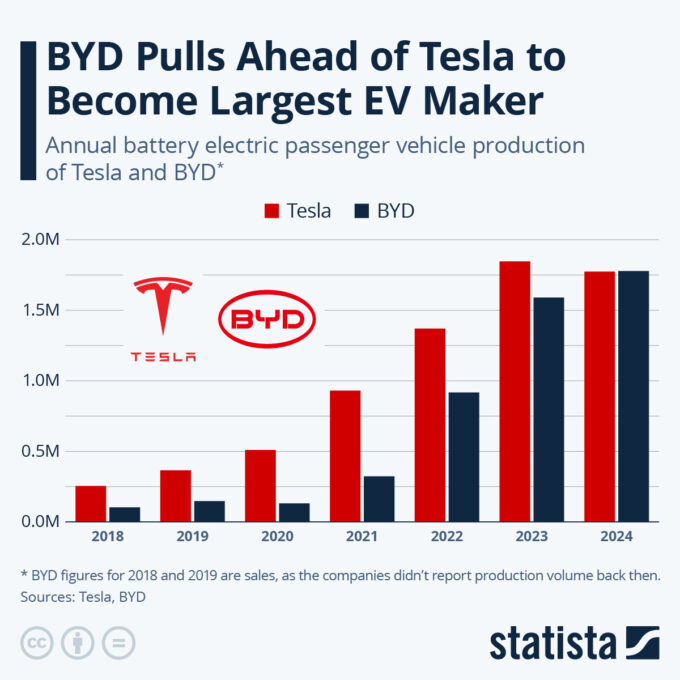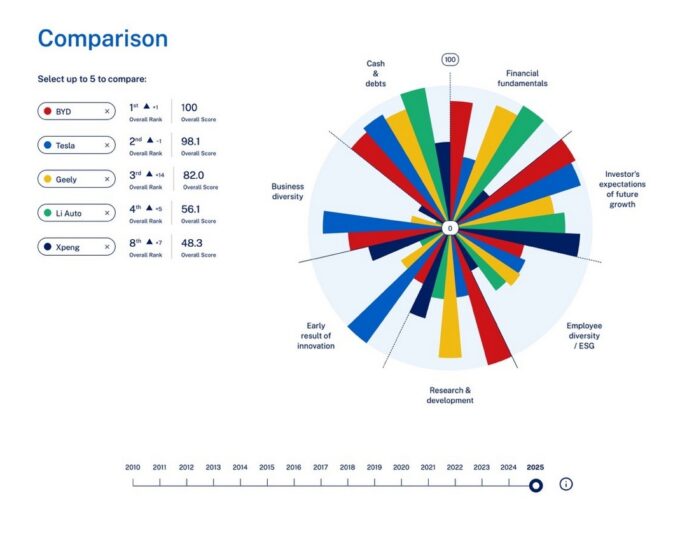IMD’s latest Future Readiness Indicator for the automotive sector, released in May 2025, corroborates this trend, with Chinese automakers securing three of the top four spots ahead of traditional incumbents, including Kia, VW, Toyota, Ford, and GM. BYD led this year’s indicator (ahead of Tesla), with Geely securing the third spot, and Li Auto fourth. Another EV manufacturer, XPeng, took eighth position overall.
The Future Readiness Indicator assesses a company’s preparedness for the future. We use a rule-based methodology to arrive at a composite score for each company, enabling us to identify industry leaders. We can then investigate the behaviors and attitudes of specific companies. This includes evaluating key factors such as financial fundamentals, investor expectations of future growth, business and employee diversity, research and development, innovation, and cash and debt management.
Chinese automakers all climbed in the rankings this year, with notably strong scores in the Investors’ Expectations of Future Growth and Research and Development categories. This reflects the technical prowess of companies like BYD, XPeng, and Li Auto. XPeng has done well because of its heavy investment in the self-driving space, and Li Auto stands out because it launches new models or updates in half the time or less than traditional OEMs, thanks to a start-up style organization.







